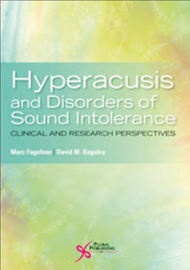Hyperacusis and other forms of decreased sound tolerance (DST) is an area that many ENT/audiological colleagues would deem as ‘woolly’. This is due to a lack of understanding behind the mechanism of the symptoms, a lack of evidence-based assessment tools and interventions. This can therefore be daunting and professionals may have a misguided sense that only experienced clinicians can deal with this patient group. This may contribute to a lack of professionals getting involved and the authors’ aim in this book is to inspire the reader to contribute to this field.
This book highlights the importance of a multidisciplinary approach and discusses the importance in creating clear definitions of each type of DST. The concise chapters of the book make it easy to dip in and out of each subject area. The reader gets a detailed overview of a variety of research areas in manageable chunks.
I was especially pleased to read a much wider perspective on hyperacusis and DST and its medical associations with other conditions, such as traumatic brain injury and auditory processing disorder. The emphasis is on a holistic approach to supporting a patient’s recovery although there are still bridges to build between other disciplines such as psychology.
A key strength of the book was the range of case studies which will remind clinicians of cases they have been involved with. The treatment protocol for fitting wearable devices provides a practical guide for audiologists. There is also discussion on other desensitisation approaches and the importance of counselling.
In conclusion, this is a book for professionals who need an update on research into hyperacusis and DST but it also provides a greater depth of understanding around the treatment options for this complex disorder. I enjoyed the book; it sparked my continued interest in this area and I am happy to rate it as a 5/5.




